So, what do we know?
(A forex, index, and commodity market review)
A subdued week for equities and global markets as the key FOMC rate decision hangs over the market. US markets have maintained gains from March, defying expectations that the Federal Reserve’s continued tightening of rates will result in a mild recession in H2.
Weekly change (amount change and percentage change on the week)
FTSE +27 +0.14%
DAX +283 +1.82%
DOW -157 -0.46%
S&P -18 -0.43%
NASDQ -118 -0.90%
NIKKEI +71 +0.25%
Hang Seng -255 -1.26%
US markets had a lacklustre week with the S&P500 slipping on mixed Q1 corporate results and concern over what looks an increasingly likely mild technical recession in the US in the second half of the year. Interest rate expectations have firmed up a little over this past week with another rate hike of 0.25% expected next week whilst the timing of the first cut in rates has drifted to either the September or November meeting.
There is also growing concern about the possibility of a US debt default. Whilst most analysts believe this is still a remote possibility, the sight of Democrats and Republicans in Congress failing to engage in partisan constructive talks to avert a Government shutdown. Some analysts are concerned that weak tax receipts could well bring forward the date when, without any agreement in the meantime, the government will be forced to shut down departments.
A clear sign of the stress and anxiety that is building in the markets can be seen in the cost of what are known as credit default swaps. These instruments are designed to pay-out when a company or government defaults on its obligations to bond holders. One-year US credit default swaps (which pay-out if the US defaults in the next year) jumped to 106 basis points last week, which is the highest level since 2008 and is up 15 basis points this year. As a comparison One-year CDS for the UK are trading at 14 basis points and for Greece at 46 basis points. The jump in the cost of insuring against a US default has jumped largely in reaction to the shortening of the date when the US government runs out of money.
Outside the US, other developed markets continued to make headway. The FTSE100 edged higher last week as private equity refocus their attention once again on acquisitions in a number of sectors – much of this activity was curtailed following the disastrous Truss / Kwarteng budget and the effects on funding costs. The resilience of UK markets is all the more impressive when taking into account the disappointing inflation data released last week, which came in at 10.1% - higher than the consensus of 9.8% but below last month’s surprising 10.4% reading.
What will have given investors more confidence regarding the trajectory of UK inflation was the PPI (producer price index) data. The PPI data measures the costs going into production (referred to as factory gate prices albeit the majority of the UK’s output is in services, which also have their own input costs). The year to March PPI rose 8.7% down from 11.9% in the year to February. This bodes well for falls in future inflation as these PPI costs feed through to lower finished prices.
Despite this, the forward markets are expecting interest rates to peak at 5% later this year, up from 4.5 to 4.75%. The Bank of England seems now almost certain to raise rates by 0.25% at their next monetary policy meeting in mid-May.
EURUSD unchanged
GBPUSD +030 +0.24%
USDJPY +0.38 +0.28%
The US dollar also had a quiet week, reflecting the lower volatility in capital markets. A slightly firmer interest rate outlook, with some key investors expecting no cuts this year, the US Dollar is awaiting the outcome of the FOMC meeting next week.
Gold -22 -1.09%
UK OIL -4.6 -5.34%
US OIL -4.66 -5.65%
Gold continues to flirt with the $2,000 level and record highs at $2,050. Central bank purchases have tempted many funds and speculative interest which has pushed gold up 20% in six months. The increase in global macro events is the line usually rolled out which has some resonance. However, the main buyers have been Central Banks in the developing world – China, Russia, India. And it is these three countries that held talks recently with Brazil and South Africa about creating a new currency as a way of getting around the financial sanctions that the US uses to punish various regimes.
We should also be reminded that one of the main drivers has been the weakening US Dollar which has helped Gold, and other US Dollar denominated commodities, rally sharply over these the past few months. Silver has also touched its highest price in over a year albeit it is still some way off its all-time highs at nearly $30 per ounce.
Oil failed to make much headway following the surprise cut in production by the Opec+ Cartel and the initial impulsive jump higher. With no blockbuster Chinese data, oil fell sharply, giving back most of those gains from early April.
What don’t we know….yet?
(What traders need to look out for in the week ahead)
A quiet week (quiet before the storm….) on the data front with Flash GDP data out from the US and the eurozone. We also have the first monetary policy meeting for the new governor of the Bank of Japan.
Monday
No key data
Tuesday
US Conference board Consumer Confidence. Steady, like the stock market.
Wednesday
US Core Durable goods. Similar to last month. Another small fall in orders. USD, and US assets more sensitive.
Thursday
US Advanced GDP for Q1. Slowing. 2% expected after revised 2.6% in the previous quarter. A backward looking data release that tells us little about future economic activity.
Friday
Japan BoJ monetary policy meeting. First meeting chaired by new Governor, Kazuo Ueda. Expect more of the same? Ueda has already told G7, G20 counterparts BOJ will keep ultra-easy policy. JPY sensitive.
Eurozone Flash GDP. +0.2% following previous month’s revised 0% reading. Eurozone growth has struggled as the blocks largest member, Germany, was hit badly by spike in energy costs and China’s zero-covid policy. Room for improvement?
US Core PCE price index. Unchanged. A key measure of inflation that is the preferred measure of the Federal Reserve.
Q1 earnings
Following on from banks we now have big tech. Amazon (Thursday) , Alphabet (Tuesday) , Meta (Wednesday) and Microsoft (Tuesday) all releasing.
In the UK we have Banks reporting. Barclays, Standard Chartered, Nat West group.
What should we be trading?
(Analysis of the popular markets and what we like)
This week, we review the latest key support and resistance levels for EURUSD, GBPUSD, SPX500 and Gold, followed by a look at some of the recent sniper trades using the Trendsignal Plus trading system, including NZDUSD, UK Oil, US Oil and EURAUD.
What’s the problem?
(Examining a problem many traders face and what to do about it)
Last week, we covered which markets to trade, so this week we take this one step further, looking at timeframes. The timeframe you choice can have a huge impact on your profitability – and today’s Podcast explains why and what you need to consider in order to make the right choice.







